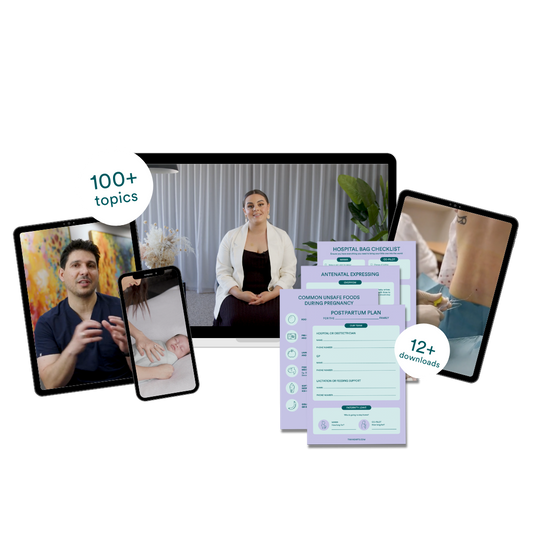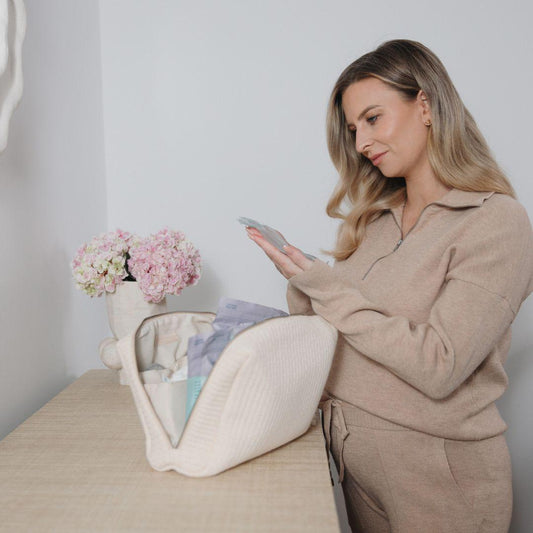Are you buying a pram for the first time or looking to upgrade? While design can be at the forefront of most people’s minds - as parents, we need to ensure that safety takes precedence. So, before you head to the shops, make sure you read you below to find out everything you need to know about pram safety!
Buying a Pram

Here is what you need to look for when purchasing a pram:
- Ensure that the pram meets the Australian mandatory standards AS/NZS 2088:2000 - you can find this on the Australian standards label
- Make sure it has a five-point restraint harness that goes around your bub’s waist and in between their legs
- Check to see that the pram has at least one or more parking breaks with a red brake lever
- Ensure that the pram has a tether strap that is both short and practical and that it does not form a loop with a perimeter of 360mm or more
- Make sure that the actual pram itself has a strong frame, is easy to steer and has a strong and secure footrest
- If your pram has a carry basket, check to see that it doesn’t tip or rock the pram when full. If you are going to have a carry basket, the best spot to pop one is in a central location underneath the pram
Using the Pram

Now you’ve got the perfect pram, remember these tips for using them safely:
- Check the folding mechanisms to make sure that they’re securely locked into place and that your pram and stroller won’t collapse
- ALWAYS use the five-point safety harness. If your little one isn’t strapped in securely, they can fall out
- NEVER hang bags over the pram handles. Put them underneath the pram to avoid any tip-overs
- Whenever you stop, always remember to put the breaks on, even if it’s on a flat surface. The slightest amount of movement or wriggling can result in wheel movement
- If you’re near roads or railways, park the pram parallel so it can’t roll into danger
- Avoid pushing prams on rough ground, over curbs or up and down stairs If you have older children, make sure they don’t stand up or lean out of the pram
- If you have older children, ensure that they don’t climb over the pram. Teach them that only one person can be in a pram at a time
- If you’re using public transport, don’t be afraid to ask for help! Hold the handles yourself, and ask the other person to hold the foot of the pram. When you’re departing, ask if another person can go ahead and grab the foot of the pram first
Covering the pram

Covering your baby's pram could compromise proper airflow and ventilation, which could cause the temperature inside the pram to increase dramatically and quickly.
A baby's temperature can increase 3-5 times faster than an adult's. Little ones are more sensitive to environmental temperatures as their bodies don't yet have the mechanisms to cool themselves down.
Overheating is a risk factor for Sudden Infant Death Syndrome (SIDS). A study from the University of Sydney has shown that covering your baby's pram with a dry cloth can increase the temperature by almost 4 degrees.
Covering the pram with a damp muslin cloth

Image Credit: The Conversation
The study looked at different coverings on a pram to see how they would affect the temperature inside the carriage. It confirmed what we already know: never to cover a pram with a dry cloth. Using a dry wrap to cover the pram increased the temperature by 3.7 degrees.
They tested how the pram's temperature would change when a damp muslin cloth covered it, reducing the temperature inside the pram by 3.0 degrees.
The pram that produced the coolest internal carriage temperature was the one that had a clip-on fan and a loosely draped damp muslin cloth over it. The temperature inside the pram carriage was lower than the air temperature by 4.7 degrees.
Read more about the study here.
Red Nose states that using a damp muslin cloth is a safer option than covering your baby with a dry blanket or wrap. They also recommend re-wetting the muslin wrap every 20 minutes to prevent it from drying out and regularly checking your baby.
It is important to regularly check on your baby when using a cloth to cover the pram. When the pram is covered, it may reduce your ability to observe your baby for signs of overheating. It is essential to check your baby regularly for signs such as irritability, pale and clammy skin, hot and flushed skin, and increased sweating.
Link to Red Nose information.
Important Things to Remember
- You should never use a pram as a substitute for a cot. If your bub is left to sleep in a pram, they can become trapped between parts and strangle or suffocate
- Never place pillows, cushions or bumpers in the pram
- Don’t allow other young children to push the pram without your help
- Check on your baby regularly while they are in the pram
Injuries sustained from prams can include bumps and bruises, pinched or trapped fingers or even strangulation and suffocation. To learn how to deal with pram injuries or emergencies, book into a Tiny Hearts First Aid course today.
Our expert educators will teach you everything you need to know about bruises, bleeding, broken bones, CPR and more!









